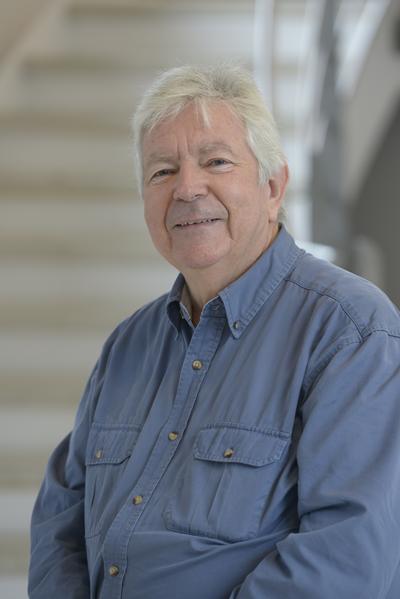Professor Michael B Hursthouse
Emeritus Professor

Professor Michael B Hursthouse is Emeritus Professor within Chemistry at the University of Southampton.
A native of the (former) mining town of Mansfield in Nottinghamshire, Mike completed his secondary education at the Queen Elizabeth's Grammar School for Boys, and then travelled south to seek his fame and fortune in London. He obtained his BSc and PhD at Kings College (1959-64), University of London, and then spent the two years (1964-66) as a postdoctoral research fellow at Imperial College with Professor Donald Rogers, working on, amongst other things, the crystal structure determination of a derivative of streptomycin, a valuable drug against TB, and a program on X-ray Crystallography for a series on science subjects for the new BBC2 channel. In 1966 he was appointed to a new lectureship in Inorganic Chemistry at Queen Mary College, London, with the responsibility for establishing a chemical crystallography laboratory. He was promoted to Reader in Structural Chemistry in 1978 and to a Personal Chair in 1987. He moved to an Established Chair of Structural Chemistry at Cardiff in 1991 and to a similar position at Southampton University in 1998. In 1980 he founded the EPSRC National Service for X-ray Crystallography, which moved with him on each of his relocations, and which has received continuous funding from the Chemistry program of the EPSRC. The Service continues its operations in Southampton, under the expert direction of Simon Coles. Through the operation of the Service, Mike and his co-workers pioneered a number of innovations in crystallographic instrumentation and methods. The most significant of these has been the introduction into small molecule crystallography of the use of area detectors for data collection. His Chemical Crystallography research interests have included structure determination of metal complexes with bulky ligands, which involved some memorable collaborations with the late Professors Donald Bradley and Sir Geoffrey Wilkinson. At Southampton he integrated his growing interests in Structural Systematics into the developing area of e-Science to create an environment for High Throughput Chemical Crystallography, studying mainly functionalised organics and, especially, compounds of pharmaceutical relevance. Having formally retired on December 30, 2007, Mike was appointed Emeritus Professor. The award of a Leverhulme Emeritus Fellowship (2011-2014), and appointment as Adjunct Professor in the Chemistry Department at King Abdulaziz University, Jeddah, enabled him to continue working on the long list of overdue publications, an activity still in progress.